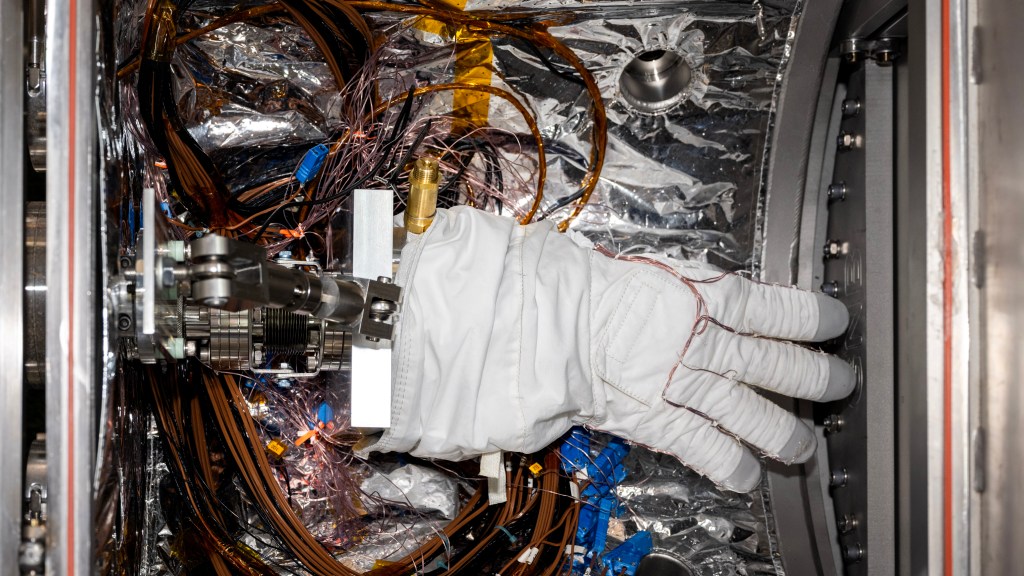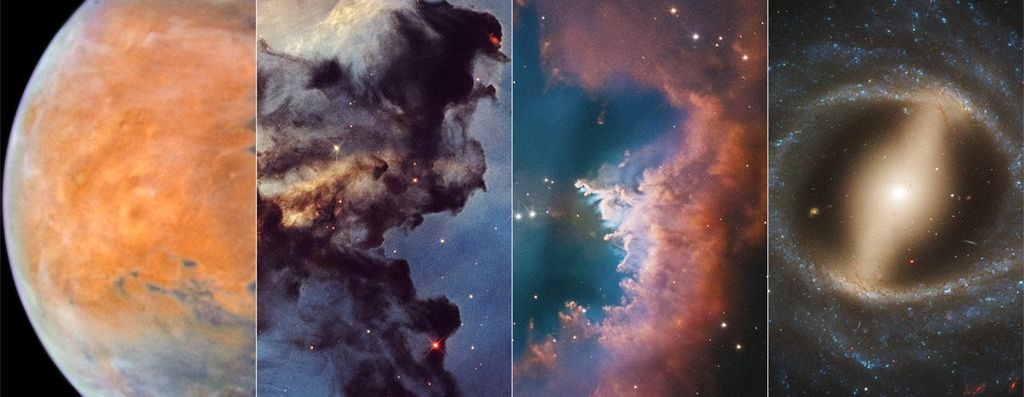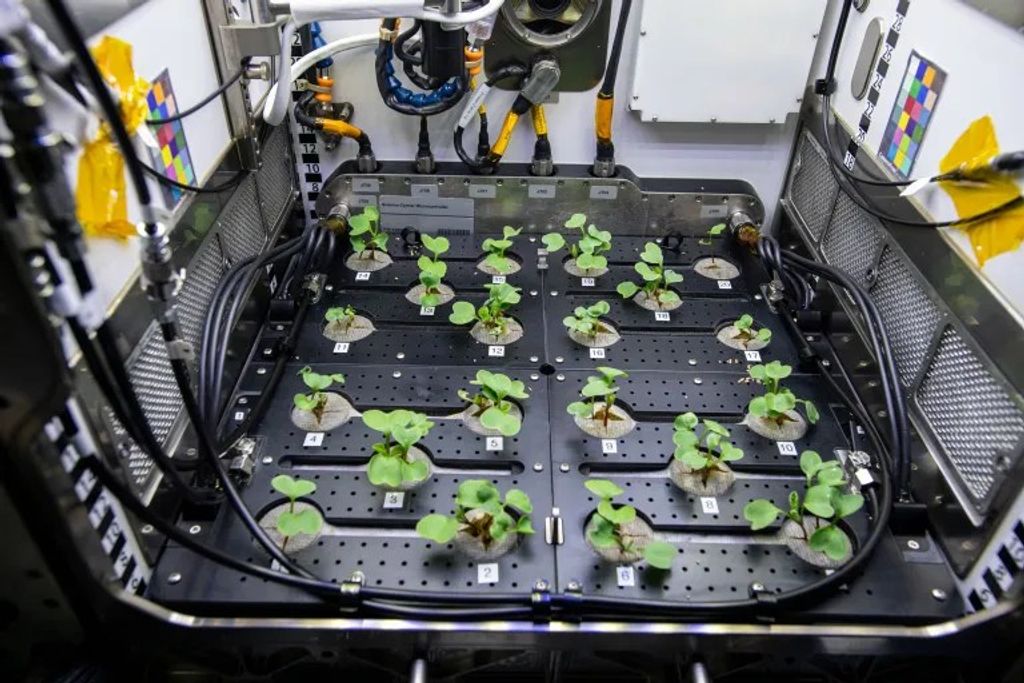Langley Research Center
NASA’s Langley Research Center is the nation’s first civilian aeronautics laboratory and the agency’s original field center. Researchers at Langley work to make revolutionary improvements to aviation, expand understanding of Earth’s atmosphere, and develop technology for space exploration. Langley sits on 764 acres in Hampton, Virginia, and employs about 3,400 civil servants and contractors. Water impact testing is performed on Orion at the Hydro Impact Basin at the Landing and Impact Research Facility at Langley. The water basin is 115 feet long, 90 feet wide and 20 feet deep. The basin is located at the west end of the center’s historic gantry. The gantry is a 240-feet high, 400-feet long, 265-foot wide A-frame steel structure, built in 1963 and is where Neil Armstrong trained to walk on the Moon. The gantry provides the ability to control the orientation of the test article while imparting a vertical and horizontal impact velocity, which is required for human rating vehicles.

Water Impact Testing
When astronauts return to Earth in the Orion spacecraft, they will enter on an extremely hot and fast journey through the atmosphere before splashing down in the Pacific Ocean. To protect the crew on landing, water-impact testing evaluates how the spacecraft may behave in parachute-assisted landings in different wind conditions and wave heights.
The Structural Passive Landing Attenuation for Survivability of Human Crew (SPLASH) project team at NASA Langley conducted water-impact testing to provide high-fidelity data of the forces that the Orion spacecraft structure and its astronaut crew would experience during landing, helping to protect the crew and informing future designs.

Boilerplate Test Article (BTA)
Engineers conducted three vertical drop tests and six swing drop tests of an Orion low-fidelity mock-up, called the Boilerplate Test Article (BTA), between July 2011 and January 2012. The BTA tests were used to shakedown the test procedures and to provide more than 160 channels of data to assist engineers in the development of analytical models. Then, another ten vertical drops of the BTA were conducted in 2012 to measure the rate at which the loads travel through the structure and help fine-tune the way NASA predicts Orion’s landing loads.
Boilerplate Test Article (BTA) Phase 0 and 1 Testing
| Date | Test Configuration |
| 7/12/11 | Phase 0 Test #1 (Vertical, rigid heat shield) 38.4° pitch, -0.4° roll, Stable 1 |
| 7/21/11 | Phase 0 Test #2 (Vertical, rigid heat shield) 20.3° pitch, -0.5° roll, Stable 1 |
| 8/3/11 | Phase 0 Test #3 (Vertical, rigid heat shield) 45.8° pitch, -1.0° roll, Stable 2 |
| 10/18/11 | Phase 1 Test #1 (Swing, flexible heat shield) 40.2° pitch, 31° roll, Stable 2 |
| 10/27/11 | Phase 1 Test #2 (Swing, flexible heat shield) 15° pitch, 30.5° roll, Stable 1 |
| 11/8/11 | Phase 1 Test #3 (Swing, flexible heat shield) 15.8° pitch, 0.3° roll, Stable 2 |
| 11/8/11 | Phase 1 Test #4 (Swing, flexible heat shield) 23.4° pitch, 179.6° roll, Stable 1 |
| 12/13/11 | Phase 1 Test #5 (Swing, flexible heat shield) 26° pitch, -1.0° roll, Stable 1 |
| 1/6/12 | Phase 1 Test #6 (Swing, flexible heat shield) 46.1° pitch, -1.1° roll, Stable 2 |
| 9/20/12 | Phase 1 Test #7 (Vertical) 45.5° pitch, -1.8° roll, Stable 2 |
Boilerplate Test Article (BTA) Vertical Drop Testing
| Date | Test Configuration |
| 8/23/12 | Test #1 (Vertical) 2.24 ft., 16.4° pitch, -1.6° roll, Stable 1 |
| 8/27/12 | Test #2 (Vertical) 2.24 ft., 16°pitch, -1.6° roll, Stable 1 |
| 8/28/12 | Test #3 (Vertical) 2.24 ft., 16.4° pitch, 5.4° roll, Stable 1 |
| 8/29/12 | Test #4 (Vertical) 8.96 ft., 27.1° pitch, -0.8° roll, Stable 1 |
| 8/30/12 | Test #5 (Vertical) 8.96 ft., 28.1° pitch, 1.2° roll, Stable 1 |
| 8/30/12 | Test #6 (Vertical) 8.96 ft., 27.7° pitch, -4.5° roll, Stable 1 |
| 9/7/12 | Test #7 (Vertical) 8.96 ft., 27.4° pitch, -1.6° roll, Stable 1 |
| 9/12/12 | Test #8 (Vertical) 24 ft. 10.75 in., 42.2° pitch, -0.2° roll, Stable 1 |
| 9/13/12 | Test #9 (Vertical) 24 ft. 10.75 in., 42.2° pitch, 0° roll, Stable 1 |
| 9/13/12 | Test #10 (Vertical) 24 ft. 10.75 in., 42.3° pitch, -1.0° roll, Stable 1 |
| 9/22/12 | Test #11 (Vertical) 24 ft. 10.75 in., 41.8° pitch, -0.8° roll, Stable 1 |
Ground Test Article (GTA)
After BTA, the higher structural fidelity Ground Test Article (GTA), with the heat shield from the Exploration Flight Test- 1 vehicle, was water impact tested between April 2016 and September 2016. The GTA tests included five vertical tests and five swing tests. There were 608 sensors on-board the GTA, compared to 155 sensors for the BTA. Over 500 channels of data were collected for the GTA including data on two anthropomorphic test devices (ATDs), or automotive test dummies, since they are the closest representation of the human body.
The ATDs were of a 5th percentile female (weighing 119 pounds) and a 95th percentile male (weighing 236 pounds), representing the lower and upper range of astronauts. The data taken from the ATDs was used to assess safety of the crew and to calibrate and improve analytical models of the Orion vehicle. The campaign of swing and vertical drops simulated water landing scenarios to account for different velocities, parachute deployments, entry angles, wave heights and wind conditions the spacecraft may encounter when landing in the ocean.
Ground Test Article (GTA) Testing
| Date | Test Configuration |
| 4/6/16 | Test #1 (Vertical) -34° pitch, 0° roll, Stable 1 |
| 4/13/16 | Test #2 (Vertical) -45° pitch, 0° roll, Stable 1 |
| 4/19/16 | Test #3 (Vertical) -23° pitch, 0° roll, Stable 1 |
| 5/11/16 | Test #4 (Vertical) -23° pitch, 0° roll, Stable 1 |
| 6/8/16 | Test #5 (Swing) +26° pitch, 180° roll, Stable 1 |
| 6/24/16 | Test #6 (Swing) -20.3° pitch, 0° roll, Stable 1 |
| 7/21/16 | Test #7 (Swing) -50.2° pitch, 0° roll, Stable 2 |
| 8/4/16 | Test #8 (Swing) -43.8° pitch, 30° roll, Stable 2 |
| 8/25/16 | Test #9 (Swing) -26° pitch, 90° roll, Stable 1 |
| 9/7/16 | Test #10 (Vertical) -15° pitch, 0° roll, Stable 1 |
Structural Test Article
Based on the final design for the configuration that will fly on Artemis II, NASA’s first mission with crew, the Structural Test Article (STA) built by Lockheed Martin underwent water-impact testing at Langley in March-May 2021. The tests focused on the extreme limits of Orion’s structural “twin” and less about reducing model uncertainty, as the BTA and GTA tests were. These tests looked similar to the previous, however, the STA crew module is more flight-like in its configuration, with several structural updates and modifications based on data from wind tunnel tests and Exploration Flight Test-1. Three vertical water impact tests and one swing water impact test were conducted in this series. Data from the drop tests will be used for final computer modeling for loads and structures prior to Artemis II.
Structural Test Article (STA) Testing
| Date | Test Configuration |
| 2/11/2021 2/22/2021 |
Final waterproofing |
| 2/22/2021 | STA ready for WIT |
| 2/23/2021 | Weight & CG Test/TRR STA WIT/Clear RFAs |
| 3/4/2021 | Test #1 (Vertical) 21° pitch, 0° roll, Stable 1 |
| 3/11/2021 | Test #2 (Vertical) 21° pitch, 0° roll, Stable 1 |
| 3/18/2021 | Test #3 (Vertical) 21° pitch, 0° roll, Stable 1 |
| 3/23/2021 4/12/2021 |
STA WIT pre-swing test activities |
| 4/13/2021 | Test #4 (Swing) 43°-46.5° pitch, 0° roll, Stable 2 |
| 4/23/2021 5/6/2021 |
STA WIT close out activities/prepare/store to ship |


























